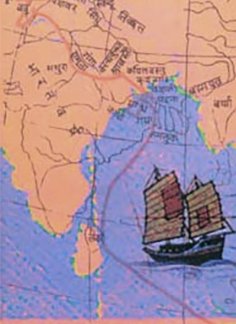Monarchy: 1 definition
Introduction:
Monarchy means something in the history of ancient India. If you want to know the exact meaning, history, etymology or English translation of this term then check out the descriptions on this page. Add your comment or reference to a book if you want to contribute to this summary article.
India history and geography
Source: archive.org: Rajatarangini (Ranjit Sitaram Pandit) (history)Monarchy in the Vedic period, according to the view of German scholars, was elective; it became hereditary in the epic age. Kalhana’s history shows the kingship in Kashmir to be elective in the early stages. At the end of the fifth Taranga, there is an interesting account of the election of the king as a result of which Yashaskara (939-948 A.C.) ascended the throne. The history of hereditary monarchy is the history of mediocrity; the Kashmiri kings were controlled and exhibitedby powerful individuals or cliques “as are snakes by snake-charmers” for their own benefit.

The history of India traces the identification of countries, villages, towns and other regions of India, as well as mythology, zoology, royal dynasties, rulers, tribes, local festivities and traditions and regional languages. Ancient India enjoyed religious freedom and encourages the path of Dharma, a concept common to Buddhism, Hinduism, and Jainism.
See also (Relevant definitions)
Full-text (+4): Mahotsaha, Rajya, Ekaishvarya, Aniyantrita, Rajatantra, Vaidhanika-rajatantra, Rajakiya-satta, Ekaprabhutva, Aikarajya, Ekasatte, Nirankush-rajtantr, Aikapatya, Sarvabhaumapada, Rajni, Rani, Impurity, Purity, Ganasangha, Malla, Kusinara.
Relevant text
Search found 46 books and stories containing Monarchy; (plurals include: Monarchies). You can also click to the full overview containing English textual excerpts. Below are direct links for the most relevant articles:
Bihar and Eastern Uttar Pradesh (early history) (by Prakash Narayan)
State formation < [Chapter 1 - Political Formation at the time of Buddha]
Chapter 1 - Political Formation at the time of Buddha
Clans and Gana-Sanghas < [Chapter 1 - Political Formation at the time of Buddha]
Good Government or Self-government < [October – December, 1999]
The Winds < [October – December 1991]
Freedom in the West < [March-April, 1929]
Yajnavalkya-smriti (Vyavaharadhyaya)—Critical study (by Kalita Nabanita)
Ancient Indian political system (Introduction) < [Chapter 4 - The Political Aspect Reflected in the Vyavahārādhyāya]
The Chaldean account of Genesis (by George Smith)
Chapter XI - The Izdubar Legends
Chapter IV - Babylonian Mythology
The Sacrifices of Rajasuya, Vajapeya and Ashvamedha (study) (by Aparna Dhar)
Chapter 4 - Major Sacrifices of the Śatapatha Brāhmaṇa
Dichotomic interpretation of the Sarvamedha Sacrifice < [Chapter 6 - Dichotomic interpretation of the Major and Minor sacrifices]
Buddhist Education in Thailand (critical study) (by Smitthai Aphiwatamonkul)
1.1. General Background—Government and Administrative Structure < [Chapter 2 - The Thai Sangha System of Education]
2.1. History of Education in Thailand < [Chapter 2 - The Thai Sangha System of Education]
5. Sangha’s Administration in Thailand < [Chapter 2 - The Thai Sangha System of Education]